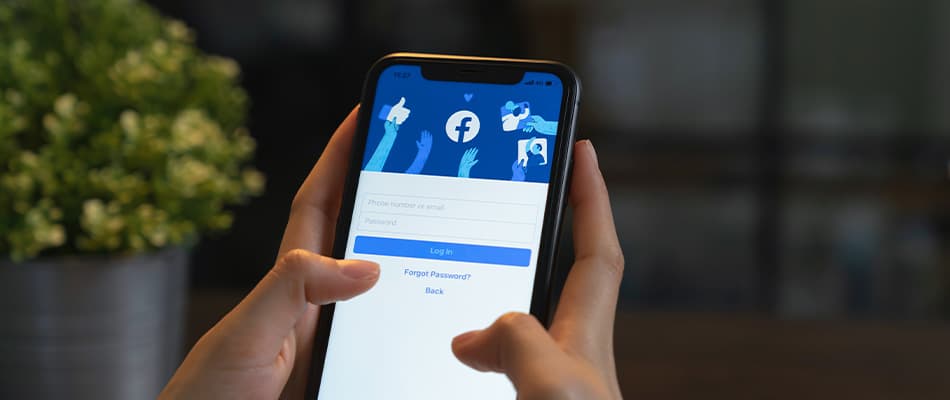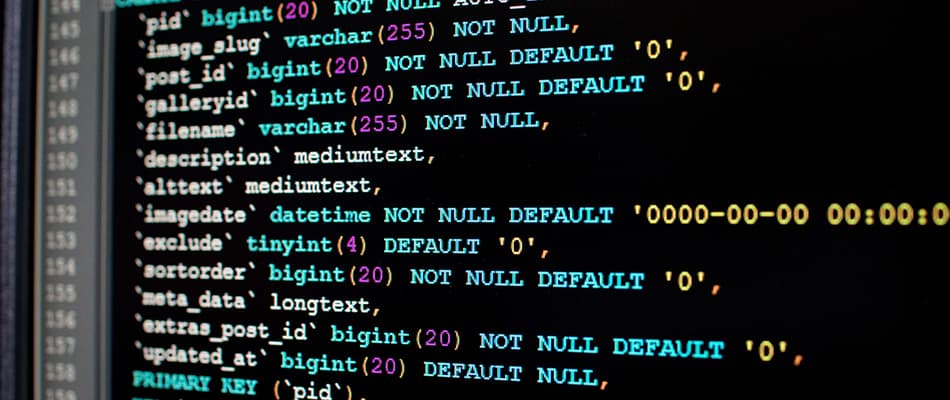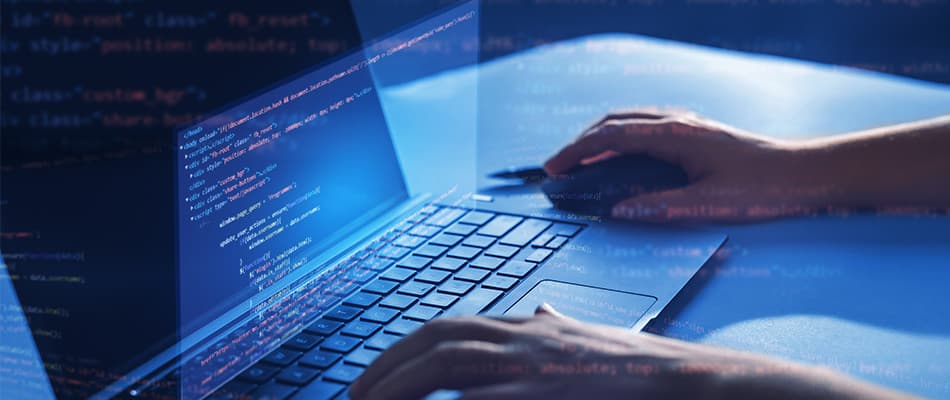What is Graphic Design? Explore its components, technologies, and applications here!
Graphic design is creating visual content to communicate ideas and messages. It combines text, images, and layouts to design logos, websites, advertisements, and social media posts. Graphic design makes information easy to understand, visually appealing, and engaging. To understand what is graphic design, it’s important to know that it plays a significant role in how businesses communicate with their audience and build their brand. Designers use tools like Adobe Creative Suite to bring their ideas to life, balancing creativity and purpose. Graphic design is not just about aesthetics; it also ensures the message is clear and aligns with the brand’s values. It is essential for creating a strong and consistent visual identity across different platforms.
This article will explore the concept of graphic design, its key components, tools and technologies, its usage, and importance.
What is Graphic Design?
Graphic design is creating visual content to communicate ideas and messages. It combines text, images, and layouts to design logos, websites, advertisements, and social media posts. To understand what is graphic design, it is also important to understand its aim. The goal is to present information in a clear, engaging, and visually appealing way. Graphic designers use tools like Adobe Creative Suite to bring their ideas to life, balancing creativity with strategy to create visuals that align with a brand’s identity and message. Graphic design is all about making content that is both attractive and effective in communicating with the audience.
What is a Graphic Design Life Cycle?
The above section has explained what is graphic design, but it’s also essential to look at its lifecycle. The graphic design lifecycle helps designers move from an idea to a finished project, step by step. These stages ensure the design meets what the client and audience need. By following these steps, the process stays organised and works well. Each stage helps make a good design.
Here are the main stages of the graphic design lifecycle in simple terms:
- Project Briefing: Learn what the client needs, their goals, and who the audience is to create a clear plan.
- Research and Discovery: Find inspiration, check what competitors are doing, and study market trends to shape your design ideas.
- Concept Development: Create simple sketches and mock-ups to try out ideas and show early versions to the client for feedback.
- Design Creation: Turn approved ideas into complete, detailed designs using tools like Adobe Creative Suite.
- Client Feedback: Show the design to the client, listen to their thoughts, and make changes based on their feedback.
- Revisions and Edits: Make changes to improve the design until it meets the client’s needs.
- Final Approval: Get the client’s final okay to confirm the design is finished and ready to use.
- Delivery and Implementation – Send the final design to the client and help them use or publish it if needed.
What Are the Different Types of Graphic Design?
Graphic design is a creative field that shapes how we see and interact with visual content. It includes various types, each serving a unique purpose, from branding to digital interfaces. To better understand what is graphic design, it is important to explore its different types and how they contribute to communication, marketing, and user experience.
Below are the main types of graphic design that everyone should be familiar with while learning graphic design:
1. Visual Identity Design
This type focuses on creating logos, colour palettes, and brand guidelines to give businesses a distinct visual identity. It helps brands build recognition and connect with their audience.
2. Marketing and Advertising Design
This category involves creating promotional materials such as social media ads, brochures, and banners. The design work ensures that marketing messages attract attention and drive engagement.
3. User Interface (UI) Design
This creates visually appealing and user-friendly digital experiences for websites, apps, and software. The focus is on layouts, buttons, and navigation for smooth interactions.
4. Publication Design
This includes designing books, magazines, newspapers, and digital publications. It involves arranging text and visuals in an appealing way to improve readability and engagement.
5. Packaging Design
This category deals with creating attractive and functional designs for product packaging. The work done by graphic designers influences buying decisions and ensures that products stand out on shelves.
6. Motion Graphic Design
This involves designing animated visuals for videos, advertisements, and social media. Motion graphics add movement to design, making content more dynamic and engaging.
7. Typography Design
This focuses on creating and arranging fonts to enhance readability and style. Typography is important in branding, editorial design, and digital content.
8. Illustration and Art Design
This type of graphic design includes custom artwork, drawings, and visual storytelling. It is used in books, branding, and digital media to create unique and expressive visuals.
What are the Elements of Graphic Design?
To make good and eye-catching designs, it’s important to know the key components of graphic design. Understanding what is graphic design means knowing that these components are the building blocks of great design and help share the message clearly. When used the right way, these elements help designers create visuals that attract attention and communicate information well. Each component helps make the design look balanced and appealing.
Here are the main components of graphic design to see how they help create great visuals:
- Line – A line connects points, creates shapes, or guides the viewer’s eye through the design.
- Shape – Shapes add interest and help organise information in a design.
- Colour – Colour sets the mood and makes a design more attractive and engaging.
- Texture – Texture adds depth and makes designs feel real and interesting.
- Typography – Typography is the style of text used to make words clear and appealing.
- Space – Space separates elements, making the design look clean and organised.
- Balance – Balance arranges all elements to look stable and visually pleasing.
- Contrast – Contrast highlights important parts and makes the design stand out.
What Does a Graphic Designer Do?
Graphic designers bring ideas to life through visual storytelling. They create images, layouts, and branding materials that communicate messages effectively. To truly understand what is graphic design, it is important to look at the role of a designer and how they bring concepts to life. Besides creating visuals, a graphic designer also uses strategic thinking, creativity, and technical skills in their job role.
The following are the major responsibilities of graphic designers:
- Creating Visual Concepts: Graphic designers develop creative ideas based on client needs. They brainstorm and sketch concepts that align with brand identity and project goals.
- Designing Graphics and Layouts: They design everything from logos to social media posts, ensuring that layouts are visually appealing, well-structured, and easy to understand.
- Using Design Software: Designers work with tools such as Adobe Photoshop, Illustrator, and InDesign to create and edit graphics for digital and print media.
- Collaborating with Clients and Teams: They communicate with clients, marketers, and developers to understand project requirements and ensure that the final design meets expectations.
- Maintaining Brand Consistency: Designers follow brand guidelines to ensure that colours, fonts, and styles remain uniform across all marketing materials.
- Selecting Colours, Fonts, and Images: They need to choose the right design elements for creating visuals that attract attention and convey the intended message.
- Reviewing and Refining Designs: Before finalising a project, designers review their work, gather feedback, and make necessary adjustments to improve quality.
Tools & Technologies in Graphic Design
Graphic design has evolved greatly with the help of digital tools and technology, making it easier and quicker to create eye-catching visuals. To completely understand what is graphic design, it’s important to know how these tools and techniques help designers bring their ideas to life, whether for social media posts, logos, or websites. Learning these tools is essential for anyone who wants to work in graphic design.
Here are the main tools and technologies that are used in graphic design:
- Canva – Canva is an easy-to-use platform that lets you create designs quickly. It has many templates, fonts, and images. You can use it to make social media posts, business cards, and more, whether a beginner or a pro.
- ChatGPT – ChatGPT is an AI tool that helps designers by giving creative ideas, design tips, and text for graphics.
- Hootsuite – Hootsuite helps designers manage their social media. You can plan, schedule, and post content on different platforms to keep your branding consistent.
- Lumen5 – Lumen5 turns text into videos. It’s perfect for designers who create video content for marketing or education.
- Suno – Suno is a photo-editing tool with filters, effects, and other features to make photos and designs look polished.
- DALL·E – DALL·E is an AI tool that creates images from text descriptions. It helps designers quickly come up with ideas and make visual content.
- Traackrr – Traackrr helps designers keep their projects organised by tracking tasks, deadlines, and changes.
Why is Graphic Design important?
Once you understand what is graphic design, you must also know its importance. Graphic design isn’t just about making things look nice; it’s essential for communicating ideas and creating a solid brand image. Good graphic design helps businesses connect with their audience, build trust, and stand out. It blends creativity with strategy to share messages.
Here’s why graphic design is important:
- Creates a Strong Brand Identity – Graphic design helps build a unique and recognisable look for a brand that people can easily identify.
- Communicates Messages Clearly – It makes information simple and easy for the audience to understand.
- Builds Trust – Professional and well-made designs create a trustworthy and reliable image for the brand.
- Grabs Attention – Eye-catching visuals draw people in and keep them interested.
- Supports Marketing – Graphic design makes ads, brochures, and websites more effective and engaging.
- Improves User Experience – Good design makes websites and apps easy to use and navigate.
- Leaves a Lasting Impression – High-quality design helps people positively remember the brand.
What is Graphic Design used for?
Graphic design has many uses. Once you understand what is graphic design, it becomes equally important to know its uses. Knowing how to use graphic design elements can help you use them correctly and generate positive results. Graphic design is essential for businesses, personal projects, and learning materials. You can see it everywhere, like on websites and product packaging. It changes how we see and understand information.
Here are the main ways in which graphic design is used:
- Marketing and Advertising – Graphic design is used to create attractive ads, brochures, and social media posts that promote products and services.
- Branding – It helps businesses develop logos, colour schemes, and visual styles that make their brand unique and recognisable.
- Web Design – Graphic design ensures websites look appealing and are easy to navigate, improving user experience.
- Social Media Content – It makes posts visually engaging, which helps increase interaction and reach on social media platforms.
- Product Packaging – Good graphic design makes packaging stand out and communicates essential information to customers.
- Print Media – It’s used in creating magazines, flyers, posters, and business cards that grab attention and deliver clear messages.
- Educational Materials – Graphic design helps create infographics, slideshows, and textbooks that make learning easier and more enjoyable.
Applications of Graphic Design in Various Industries
For anyone interested in graphic design, simply knowing what is graphic design provides a strong foundation. However, understanding how it is used in different industries is just as important. In many fields, graphic design helps create visuals, communicate messages, and build brand identity. Whether in advertising, education, or other sectors, graphic design plays a big role in how businesses connect with their audiences. By learning about its uses in various industries, designers can become more skilled and ready for any project.
Here are the top applications of graphic design in different industries:
- Advertising and Marketing – Graphic design is important for making ads, brochures, and online banners that promote products and services. It helps grab people’s attention, share clear messages, and make marketing more effective. Understanding what is graphic design helps businesses use design to strengthen their marketing strategies and connect with their target audience more properly.
- Entertainment – The entertainment industry uses graphic design for movie posters, music album covers, and promotional content. It sets the tone and builds excitement for new releases. Graphic designers make visuals for video games, TV shows, and streaming services look appealing and professional.
- Education – Graphic design helps create textbooks, presentations, and learning materials that are easy to understand. Infographics and visual aids make complex topics simpler and more engaging for students. It helps keep learning content interesting and accessible for all ages.
- Web Design and Development – Websites use graphic design to look attractive and be easy to use. Designers create layouts, buttons, and icons that make navigation simple. Good graphic design ensures websites not only look good but also guide users smoothly through the content.
- Retail and Product Packaging – Graphic design makes product labels and packaging stand out on shelves. It helps share essential product details and makes products look appealing. Designers use colours, shapes, and fonts to create a unique brand look.
Understand what is digital design vs graphic design here.
How to Get Started with Graphic Design?
If you want to start your career in graphic design, upskill in it or simply switch from another field to this, you can enrol in relevant courses. Starting with graphic design at Digital Regenesys is a great way to build important skills and gain experience. The UI/UX and Graphic Design Course with AI/ML course offered by Digital Regenesys gives students the knowledge and tools they need to create strong and effective designs. By joining this course, students will learn practical skills in design basics, user experience, and design tools, building a solid foundation in graphic design. They will benefit from expert-led training, hands-on projects, and a supportive learning environment, preparing them for a successful career in graphic design and UI/UX design.
Here are the benefits of joining this course at Digital Regenesys:
- Expert Training – Learn from experienced teachers with simple tips and real-life examples. This makes it easier to understand and use what you learn.
- Hands-On Learning – Work on real projects to gain helpful experience and build a strong portfolio. This helps you get ready for real design jobs.
- Career-Focused Preparation – Develop the main skills you need for a design job. The training helps you prepare for the industry.
- Online Learning Mode – This course offers an online learning mode, which makes it easy to balance learning with other activities.
Thus, understanding what is graphic design is important because it shapes how messages are shared, brands are built, and people stay interested. Graphic design uses creativity and planning to make visuals that grab attention and share ideas. It is used in many industries, like marketing, education, and web design. Learning about its parts, tools, and uses lets you see why it is so important. To build practical skills and start your career, consider enrolling in the UI/UX and Graphic Design Course at Digital Regenesys for expert training and hands-on experience.
FAQ: What is Graphic Design?
What is graphic design?
It is the practice of creating visual content using text, images, and layout to convey messages clearly. It is used for logos, websites, brochures, and social media posts.
What is graphic designing course all about?
It teaches the skills and tools needed to create visual content. Courses cover design basics, user experience, and software to prepare students for real projects.
What is graphic design all about?
It’s about using creativity and planning to make visuals that grab attention and share messages. It helps build brand identity and engage audiences.
Why is graphic design important?
It is key to marketing and advertising because it helps create strong brand identities, share clear messages, and attract audiences.
How is graphic design used in different industries?
It is used in advertising to create ads, in education to create learning materials, in web design to create user-friendly sites, and in retail to package products.
Recommended Posts













